F.E.A.R. 2: Project Origin
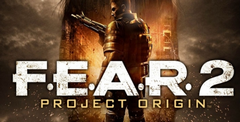
- Developer: Monolith Productions, Inc.
- Genre: Arcade/Action
- Originally on: Windows (2009)
- Works on: PC, Windows
- User Rating: 10.0/10 - 4 votes
- Rate this game:
Game Overview
Monolith's Second Outing for her of bedraggled hair and psychic entombment is crash-landing in a very different pool of expectation to the original F.E.A.R.. In the past few months, shooters Have Changed. They've read up on their subject matter and got their NVQs. Left 4 Dead has nailed co-op, Far Cry 2 gave us an open world, Fallout 3 merged RPG stats with action... the noble first-person shooter, once the most stodgy template of all, is evolving. All of which makes you wonder if a shooter with as strong a corridor ethos as Project Origin could be spiralling into the danger zone.
I'm not denying that they're nice corridors. You can't say that Monolith haven't answered their critics. The relentless grey offices and grey slums of F.E.A.R., antfits limited selection of Copland paste slo-mo soldiers have been up more than a titl. Environments are more interesting to look at and to fight in, military goons are accompanied by a fuller and more rounded complements of mutants, psychic ghosts and robots, and every level is punctuated by far more dialogue and scripting.
Lonesome Soldier
Whereas the original F.E.A.R. was a lonely business (with you being part of a team, but coming up against contrivance after contrivance to split you up) Project Origin is putting a lot more stock into battling alongside a team of friendly AI, and having them being vaguely fun to kick around with to boot. After an initial Alma interlude, the game opens with your character (one Michael Becket) sitting in what is essentially a Scooby Doo Mystery Machine for modern well-armoured supersoldiers. There's a lot of banter and casual swearing, but as you work your way inside the tower block that you've got to infiltrate, you're already warming to them. They respond to your actions, for example questioning just why you're shooting a statue for no apparent reason, or asking where you think you're going when you start haring off down the wrong corridor.
They're also gently amusing in the ways they interact, with the squad commander demanding that the clearly demarked 'funny' character climb the hundreds of stairs up to the penthouse suite while everyone else takes the lift. Inevitably most of these poor souls are going to die horrible deaths before the end of the game - but from what I've played at least, you'll probably be sorry to.see them go.
Flashbang Action
When it comes to action, to start with Project Origin has health packs. These were these things that people in olden times used to carry around, before hiding behind a pillar for a little while was found to cure all ills. As for the bullets actually doing said damage, it's business as usual -elevator doors open, goons with a healthy awareness of how to best use the environment around them rush out, slo-mo is smacked on and giblets (every now and then) fly.
F.E.A.R.'s neat melee combat system has sadly bitten the dust (floor slides and roundhouse kicks replaced by the usual gun butt-slam to the head), but the grenade quota has grown to cover explosions of both electrical and fiery persuasion as well as the usual timed and proximity explosions. Something that is concerning is that the action does seem slower than before, and that often in all the pyrotechnics it's now hard to see exactly what cleverness your foes are showing off. It's strange to say, but in a grey corridor or a grey courtyard it was clear and evident that what enemies were doing was to do with both surviving and making you dead -in Project Origin it's much, much harder to work out what the AI is up to, and as such there's a level of instant gratification that seems lacking.
What can't be denied is that the F.E.A.R. menagerie has been spruced up. A later level I played was in a primary school. But it was a primary school with chilling secrets, an extensive underground network and more surveillance cameras and one-way mirrors than they used to have back when I was at Cople Lower School. Inside this educational establishment was a Remnant.
These puppeteer villains are intriguingly granted BioShock-esque individual qualities, and so are doomed to carry out their last action or most familiar motion. As such a businessman will be hailing a taxi that will never come or, in this case, a piano teacher will tap out an atonal ditty until the day after forever. Or until they see you, animate corpses lying around them and coordinate an en masse attack.
One of Aristide's dirty secrets, meanwhile, is the heavily publicised Abomination - a wall-crawling spider-minded chasm-leaping bundle of muscle that have been making their presence known in the hospital levels that Monolith have been showing off for the past aeon.
Thrill Lacking
Despite all this, I still worry. My happy smiles as I shot men off roofs and heard their prplonged scream were mixed in with the troubled grimace of someone first being taught calculus. Why do I have to repeatedly tap a key to fend off a boss and kick him in the nuts? Why isn't the shotgun as meaty as it was before? Why when the world at large realised they were a bad idea four years ago have Monolith persisted with invisible (well, ghosty invisible) monsters? And, come to that, having played four of the game's levels from different stages - why didn't I once pin a goon to the wall with a nail through the head?
Project Origin is going to be a solid, dependable game. It's funny, it's pretty, it's blood-spattered and it's certainly a better structured outing than Monolith's previous galumph through office blocks, basements and cleaning cupboards. Yet in the four levels I've played through the spark of originality, daring and raw passion I felt when I played the first game (hell, even when I saw its first screenshots) wasn't really there. I checked with my trouser department, and it reported back with a definitive negative in the arousal stakes.
Maybe, in distant February, I'll sit down with the game and something will click and the Alma magic will flow back into my soul. The potential for salvation is certainly there - but right now, in the richest and most bountiful season of gaming in aeons, there are some reasons to be fearful for the little girl in the bright red dress.
Copycat Corrie
F.E.A.R.'s connection with a soap
When explaining the plot of F.E.A.R. it's best to draw parallels with something familiar. As such, for the layman, the F.EA.R. storyline isn't a million miles away from the recent Coronation Street storyline in which John imprisoned Rosie in his attic in order to pursue a relationship with Fiz. However, in F.E.A.R. the imprisoned lady has been used to create an army of supersoldiers and psychically projects images of her as an eight year-old child to scare people, then make them bleed out of every orifice.
In Coronation Street the forced imprisonment was curtailed when Rosie hit John over the head with a baseball bat and ran away, while the team behind F.EA.R. opted for a nuclear explosion in which millions died. The similarities are almost uncanny, aren't they?
Back In 2005, little girls with lank, greasy hair were terrifying. Across the country, crowds of cinemagoers would stream out of showings of The Grudge and The Ring Two, kicking children in the face and then tipping over prams as a precautionary measure. It was riotous madness, and in the midst of it we were graced with F.E.A.R. - Monolith's arse-clenchingly scary, spectacularly violent and needlessly bloody shooter. It was a fantastic, if voyeuristic, sideways glance at the artistic elements involved in shooting a man in slow-motion so that he does a back flip, while a scary little girl points at baddies to make their heads explode.
This classic wasn't without problems though. F.E.A.R.'s second half let the tempo drop and the game slowed to a lull. It would dawn on you that you'd been scurrying about the same concrete corridors for the past five hours, and the visceral magic would fray at the seams. The subsequent two expansions (not developed by Monolith, it must be stressed) would extrapolate on the worst and most concrete corridors parts of the original, adding little new content to the mix and fumbling the expert pacing of the first game.
Which brings us to F.E.A.R. 2: Project Origin, Monolith's return to the franchise. Can the sequel innovate with varied and exciting new locales? What crazed scares can they concoct this time? Does it even need to be anything drastically new? We'll settle for searing a man in half with a laser beam, as long as we never see another series of featureless grey corridors.
Set slightly before and then mostly after the nuclear blast at the close of F.E.A.R. the locations you'll visit will be mostly trashed. Though the piles of rubble and debris act as convenient ways of guiding through the Arban environments, Project Origin feels less linear than tine first game virtue of a handful ofppen arenas dotted about the place. Outdoors bits rcvolv found the ruined city' streets (not original, but easily the game's most graphically pleasing) and the addition of daylight does littfe thankfull to dissolve the heavy and dark atmosphere of the game.
You'll slap yourself in the forehead during the game's opening, which sees you try to enter a luxury apartment block, only for the main entrance to be blocked and you to be forced to enter through a maintenance area. Cinder block walls, metal shelves packed with cleaning products - Project Origin doesn't put its best, least-concrete foot forward with its opening level. But thankfully the environments become a great deal more colourful (and better lit) as the story progresses.
Though Monolith fall back on their beloved concrete corridors on a few occasions, Project Origin's environments are varied enough to maintain your interest for the 10 hours it'll take you to come out the other end. An elementary school and a factory with lots of yellow bits will entice the cones and rods of your eyes out of their greyish-brown-induced stupor. These locations amounts to a considerable reduction in the overall number of concrete levels in the game, which we celebrate.
Backflips
Of course, you'll still be shooting men so that they do a back flip. And most of the time you'll be doing this in slow-motion. Your ability to slow down time in the original was a consequence of you having been cloned from the magical Alma (the terrifying little girl who stalks you throughout both games), though ceiling, tearin away lumps of masonry and filling the air with concrete dust. Your slow-motion ability expires, sound tears back to normality from its underwater glug, and the corpse of your enemy falls to floor with a thud.
Armed And Deadly
Beyond the basic guns Monolith have included some treats - the laser gun has returned, and with it conies the ability to sear enemies in twain (only at certain pre-ordained points though, such as the neck or waist). The nailgun's back, allowing you to pin enemies to walls by their faces using foot-long spikes. There are some new faces in the armoury too: an awful napalm gun which gives you no sense of how it's working or where it's firing (and the resulting underwhelming "Help me I'm on fire" animation gives no feeling of satisfaction), and some sort of energy cannon johbie. This fires an orb of blue energy, which explodes on contact with an enemy - like a shit rocket launcher. Initially you'll be wary of using it due to the scarcity of ammo, later you'll become wary of using it because it's shit. Hardly an inspirational weapon rack then, with Monolith wheeling out the old favourites in lieu of anything decent and new.
Usually a last resort brought on by an untimely reload, the importance of melee attacks has been downplayed. Your repertoire of kicky-fighty moves has been greatly parfd down to include a whack of your gun butt, and a flying kick (lethal as ever, thankfully),
The simple, underlying fact here is that even on the hardest difficulty setting creating cover for yourself isn't effective. Your time would be better spent returning fire to your enemies while making use of pre-existing cover. Certainly it's a feature yoJcan ignore but in doing so you begin to reduce Project Origin to a basic continuation of the original F.E.A.R. - a direction you can see this review heading in.
Another complaint comes into view here too: Project Origin isn't a challenging game. Health packs and armour flow like honey, ammunition (for the main weapons at least) is bountiful, and great big HUD icons highlight any pick-ups. The removal of a quicksave option prevents you throwing youself into those wonderfully impossible-towin situations you're forced to fight your way out of - instead regular checkpoints ensure your safety from start to finish. Ramping up the difficulty setting does seemingly little, besides increasing the damage you receive.
And it was through repeating your fights that the original F.E.A.R.'s Al shone. Only by watching how the enemy's tactics changed to reflect your actions did you properly appreciate their flanking manoeuvres and clever grenade avoidance techniques. Project Origin's foes are a verbose lot for sure, shouting their thoughts and opinions back and forth like gun-toting masters of debate, but they lack a killer instinct It's in there, we're sure of it, but with the difficulty so diluted we're just not getting a chance to see it.
Mechs Appeal
So it seems a mite unnecessary to let you pilot one of the armoured exoskeleton mechs through two sections of the game - gunning clown anything with a heat signature and tearing through the remains of the city with rockets that make lovely spiral smoke effects as they scream through the air.
These sections stomp on any sense of tension or fear, replacing it with explosions, noise and death. But that's fine by us. Just getting into the power armour is an exciting experience: you pull the cockpit clown around you and for a moment you're in the dark. Then the video feed kicks in, the displays flickers into life and a lady computer says something like "Hello and welcome to the mech bit". (I really should note these things down.)
The ensuing carnage is gloriously well-rendered. Your powerful cannons rip through walls causing enemies to erupt into limbs and your rockets deliver some of the game's finest explosions. You feel invincible (you're not, though I defy you to die (juring these sections), and the level forcec you out of your mech before you get a chance to tire of the action.
Project Origin's lost some of the original F.E.A.R.'s subtlety and timing - whereas the first game created an air of tension before popping a balloon in your face, Project Origin's about grinding you. into a nervous pulp through the use of unending apparitions and hallucinations. And when it's not using spooky visions to wear you out, it'll chuck some high-tech Predator-style ninja men or-the well-publicised wall-climbing mutants (failed experiments of Armacham) at you.
The skittering mutant freaks are an unexpected joy to fight, as they move along ceilings and walls, swinging from railings in entirely unpredictable ways and forcing you to make use of your slow-motion abilities. The partially invisible, technologically enhanced villains you'll see towards to close of the game employ the use of some clever visual techniques too. In a similar fashion to the Predator's not-quite invisible suit, their camouflage glitters as they move, sparking with primary colours which remain static on your monitor as a sort of odd ghosting effect. It's not conveyed in screenshots at all, but it's a strangely unnerving effect which makes fighting them all the more distressing.
Feel The Magic
The magic of the original F.E.A.R. is buried in here somewhere, and occasionally it will rear its bloodied head to say hello, but Project Origin falls short of delivering the kick provided by the original game. PC shooters have evolved in great leaping bounds over the past three years (just look al Crysis, Fat-Cry 2, Left 4 Dead and Fallout 3), and while it's unfair to think we can blithely wash our hands of the concept of shooting people in corridors, Project Origin retreads the same horror territory we've seen time and time again. It's not bad horror territory, mind, it's just the same, and there are some players whose fires just won't be stoked by it in the slightest.
What it adds - the more capacious level design, the daylight, the mech bits, the cover system - doesn't amount to much more than a garnish of new ideas on an old chicken salad of a game. But as I said, the magic of F.E.A.R. is certainly in position. That basic pleasure of time slowing, of watching a death ballet unfold as glass shatters, masonry crumbles and bodies cartwheel with morbid elegance - it's all intact, and it's as incredible to behold as ever.
A Few Months back, I argued the toss with Steve about why Waxworks was scary and F.E.A.R. 2 wasn't. I'd like to backtrack a little from my militant stance and qualify my statements. F.E.A.R. 2 isn't scary, on the whole, but there have been two incidents which made me jump. A bit. One is right at the beginning, before you even get off the military vehicle you are being transported in. Another bit is slightly further on from that, where you turn and find Alma standing right next to you. That was unexpected and, therefore, unnerving. However, since that point, the shocks have been anything but. They're all far too obvious and those scuttling people/creatures are about as scary as an episode of ScoobyDoo.
Perhaps part of this is down to the fact the game is so ridiculously easy for the most part, especially if you are liberal with the use of the slo-mo ability. Like in BioShock, if there is no chance of imminent death, there is no tension and, if there is no tension, there's no chance in hell I'm ever going to be on edge enough to be unnerved by something happening in a game. The first FEAR. had this tension, as death was a much more consistent companion. This time out, the game just doesn't impose itself on you in the same way - even if it doesn't have so many boring corridors.
F.E.A.R. 2: Project Origin is the second installment in the computer horror series, in which players encounter paranormal phenomena, hallucinations, mental disorders, telekinesis, clones, and countless murders.
Plot
The story tells the story of a girl named Alma who was kidnapped as a child and tortured for a long time. This permanently clouded her mind, making her hate all humans. However, her ability to control other people's thoughts only worsened. At the end of the first part of the original F.E.A.R. game, she managed to be placed in a Sarcophagus and frozen for a long time. But now she's awakened again and is hungry for revenge.
Gameplay
Gameplay is a first-person shooter, but in addition to wielding firearms, a fist or kicking function has been added. The developers have managed the impossible - so close to the players half-dead Alma, that psychologically it is constantly felt her presence.
A special edition for VR headsets and the F.E.A.R. 2: Reborn add-on have been released.
Pros:
- Realistic optical sighting system
- 5 multiplayer modes
- Very dynamic gameplay
Cons:
- This game is a real test of nerves, with lots of dead bodies, rivers of blood, nasty creatures and unrelenting violence. When you start the game, be prepared for a good portion of adrenaline!
System Requirements
Processor: PC compatible,
OS: ![]() Windows 9x, Windows 2000
Windows 9x, Windows 2000 ![]() Windows XP, Vista, Win 7, Win 8, Win 10.
Windows XP, Vista, Win 7, Win 8, Win 10.
Game Features:![]() Single game mode
Single game mode
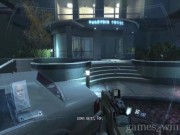

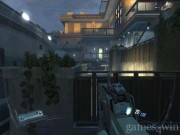
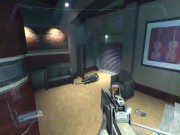
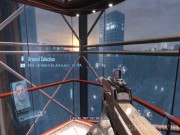

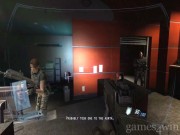
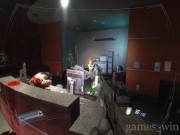
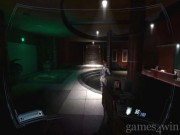


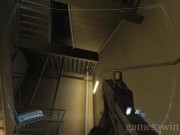
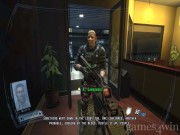
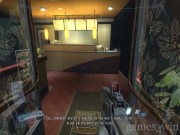
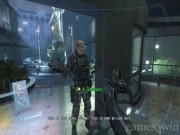

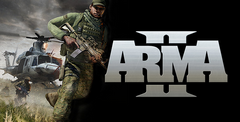 ArmA II
ArmA II Call of Duty: Modern Warfare 2
Call of Duty: Modern Warfare 2 Prototype
Prototype Call of Duty 2
Call of Duty 2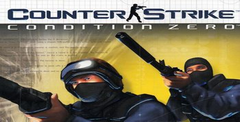 Counter-Strike: Condition Zero
Counter-Strike: Condition Zero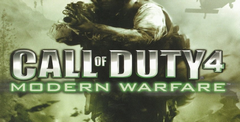 Call of Duty 4: Modern Warfare
Call of Duty 4: Modern Warfare Total Overdose
Total Overdose Medal of Honor
Medal of Honor